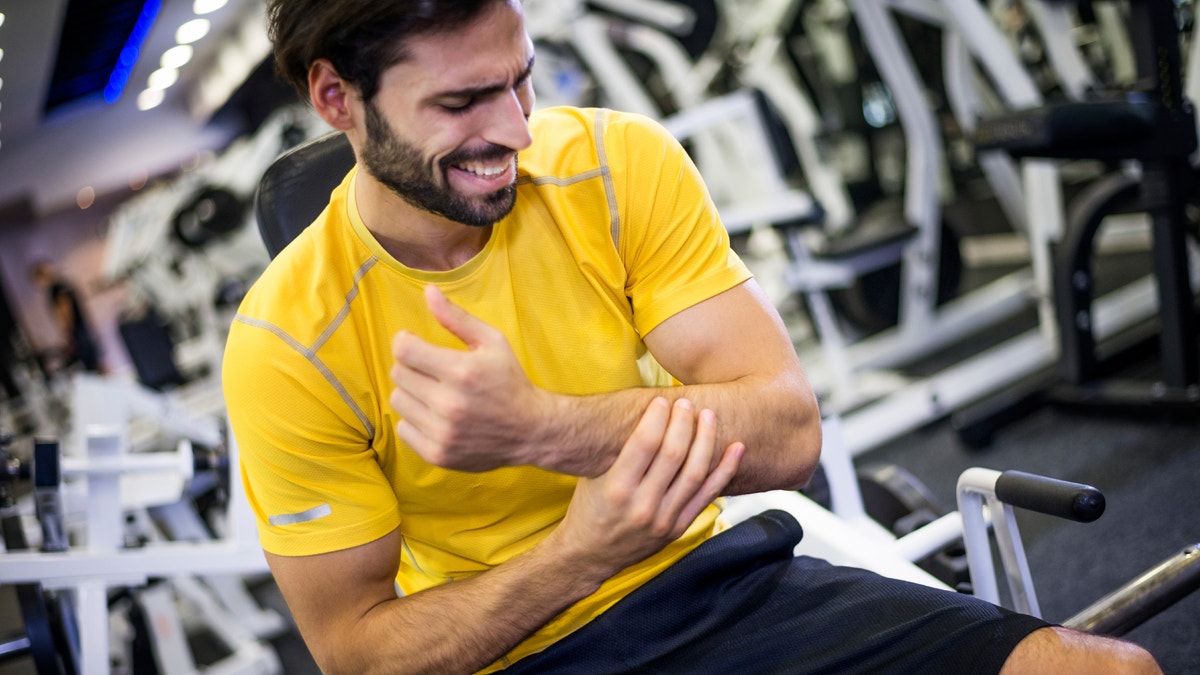
Pain is weakness leaving the body? Not exactly. While some discomfort is a hallmark of a challenging but effective workout (they don’t call it delayed onset muscle soreness just for fun), some pains definitely aren’t worth ignoring, no matter how tough you are.
“No pain, no gain is not always true in exercise, so don’t push through it if your mind is telling you it may be something else,” said Natalie Neuharth, D.P.T., physical therapist at Orthology. “It’s always better to prevent injury than to try and fix it.” And if you are injured, don’t brush off the pain. “The longer you wait, the more chronic it can become, and it can potentially take longer to heal and lead to other pains and injuries,” Neuharth said.
Whether you’re concerned about your rotator cuff, shin splints, hip pain, or an irritated knee, follow these guidelines below to help you decide on a plan of action.
5 types of workout pains to pay attention to:
1. Sharp pain
A sharp or stabbing pain during exercise (or any time, really) is a red flag that something is up.
“Sharpness is not a normal physiological response. If you are experiencing sharp pain, it usually means there is something not functioning properly in that body system,” Neuharth said. “A few common causes of sharp pains are impingement of a tendon, such as at the shoulder, a loose body [such as] a bony fragment, bone on bone contact, or a tear of the meniscus in the knee. If the sharp pain occurs once and not again, it is probably an anomaly and nothing to be concerned about.”
But checking in with your doctor is always a good idea if something feels wrong.
Related: People With This Personality Trait Are More Likely to Cheat
2. Pain with swelling
“If [pain] is associated with swelling, that usually indicates a more serious issue,” said Dr. Marci Goolsby, attending physician at the Women’s Sports Medicine Center at the Hospital for Special Surgery.
“With swelling, the body is sending inflammatory factors to the area. When there is injury, the body can’t necessarily differentiate which specific structure to heal, so it sends a lot of blood and other substances to the area or joint, creating a diffuse swelling,” Neuharth added.
Inflammation is our body’s way of healing, explained Neuharth, but if swelling persists or returns with activity, there is likely continued injury to that tissue or area.
3. Localized pain
Another sign that something’s not right is when you’re experiencing pain in just one place.
“Any pain that seems to be localized [shouldn’t be ignored],” Goolsby said. For example, “It’s not just a general soreness of the thigh muscles, but a pain that’s sharp and in your groin.”
If this type of pain doesn’t linger, there might be no immediate reason to be concerned.
“If [pain] occurs consistently with a specific exercise, I would suggest getting it checked out,” Neuharth said.
4. Pain that gets worse during your workout
“If you are working out or exercising and your pain is gradually continuing to get worse the longer or more intensely you exercise, you are likely causing further injury to that specific tissue or joint, and the exercise should be stopped,” Neuharth said.
Her rule of thumb is that if pain gets higher than a five (one being no pain, 10 being extreme pain), stop what you’re doing.
5. Painful pops
If you hear a pop that’s accompanied by pain, back off, Goolsby said.
“A pop often indicates a tear or partial dislocation,” she said. “In an acute injury, this is often a tear of a ligament or tendon.”
However, get to know what’s normal for your body, too. “Many people worry about clicking or grinding in our shoulders, knees, or other joints. These ‘noises’ are not necessarily worrisome unless they are painful.”
Related: 18 Things You Should Never Put In Your Vagina
Here’s what to do if you experience any of these types of pain:
First and foremost, stop what you’re doing if you feel any of these types of pain during your workout. Goolsby’s motto is simple but straightforward: “If it hurts, don’t do it.” (She’s not talking about your quads burning in Spin class or that ultra-long core-shaking plank, though.)
If you do suspect something’s up, it’s time for some R&R. Unless the pain is extremely severe and you can’t bear weight on it (in which case, make a doctor’s appointment ASAP), Gooslby said you can give yourself a break for one to two weeks and see how you feel.
“Things like rest, ice, anti-inflammatories, and gentle stretching can be helpful,” she said.
If you don’t see any improvement within a week or two, consider making an appointment with a doctor or a physical therapist.
“If this is an overuse injury, which most injuries sustained from working out are, try seeing a physical therapist first,” suggested Neuharth. “Most states and insurances allow you to visit a physical therapist without a referral from your doctor.”
“Discomfort with exercise is normal, but pain with exercise is not,” Neuharth said. So make an appointment with your doctor of a PT to investigate more and develop a specific plan of action. Remember, you know your body best, so listen to it.
MORE FROM SELF:
4 Things Men Hide From Their Wives
